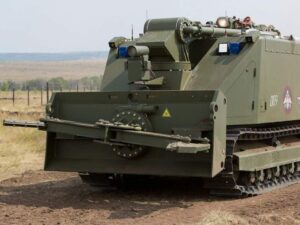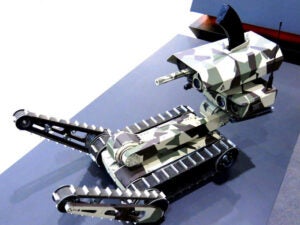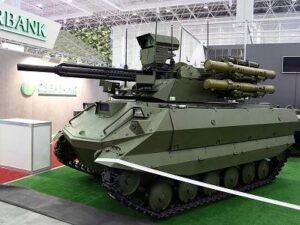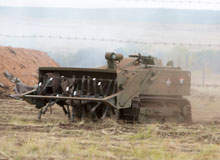Project Cutlass: Cutting Edge Bomb Disposal Technology from telerob
Since November 2002 Rheinmetall subsidiary telerob has been busily engaged in its largest, most sophisticated EOD robotics project to date. Codenamed "Cutlass", the project is intended to produce a replacement as quickly as possible for the British Army’s aging fleet of "Wheelbarrow" bomb disposal robots.
Choosing among 25 different suppliers, the British Ministry of Defence selected just two - including the Anglo-German consortium Marshall SV/telerob - awarding each a contract to develop a new prototype EOD robot. At the end of last year, both consortiums submitted their prototypes to the Ministry of Defence for testing, which is expected to announce its choice by the end of 2005. The procurement contract could encompass as many as 100 systems.
From the technical standpoint, the Cutlass Main Explosive Ordnance Disposal Remote Controlled System - to give it its full name - is by far the most ambitious project ever undertaken in the field of EOD robotics.
To appreciate the significance of its individual performance characteristics, it is best to compare the new vehicle with today’s state-of-the-art tEODor system. The manipulator, for example, features a total of eight axes as opposed to tEODor with six, and an almost unbelievably long reach of 2,900mm (tEODor: 1,870mm). Even when fully loaded and fully extended, it can move objects weighing up to 20kg. Its design is entirely modular, meaning that individual segments can be exchanged quickly and easily. But the real highlight is the manipulator control system: this is the first large EOD robot to feature tool centre point control. No longer does the operator have to approach a suspicious object one axis at a time; instead, he or she can move the gripper or tool freely in space. This makes precise placement of a disruptor on an improvised explosive device much easier, and saves considerable time.
The basic vehicle: despite having a substantially longer manipulator arm, its total weight of 330kg is less than that of the tEODor (360kg). Like tEODor, it has a climbing capability of 37°, and is able to tackle steps measuring 230mm in height. However, the prototype Cutlass has a top speed of 9km/h, triple that of the tEODor. The Cutlass can automatically withdraw four weapons or other items of equipment from the tried-and-tested tEODor tool magazine, a 25% improvement in performance over the tEODor.
Thanks to its Li-ion battery pack, the Cutlass can operate for periods of two to four hours, even when heavy demands are made on it, thus achieving the excellent performance of the tEODor. No fewer than eight cameras, twice as many as in the tEODor, ensure a perfect view of the vehicle’s area of operations. The new system’s EMC behaviour is nothing short of sensational. The tEODor’s performance here is certainly extraordinary, but the Cutlass sets an entirely new standard in compatibility. It is the first EOD robot to be awarded a "Class A" rating in the UK. This means that the robot can even employ electromagnetic weapons without risk to itself.
All in all, then, the Cutlass represents a quantum leap in EOD robotics, outperforming even the most advanced current systems.





